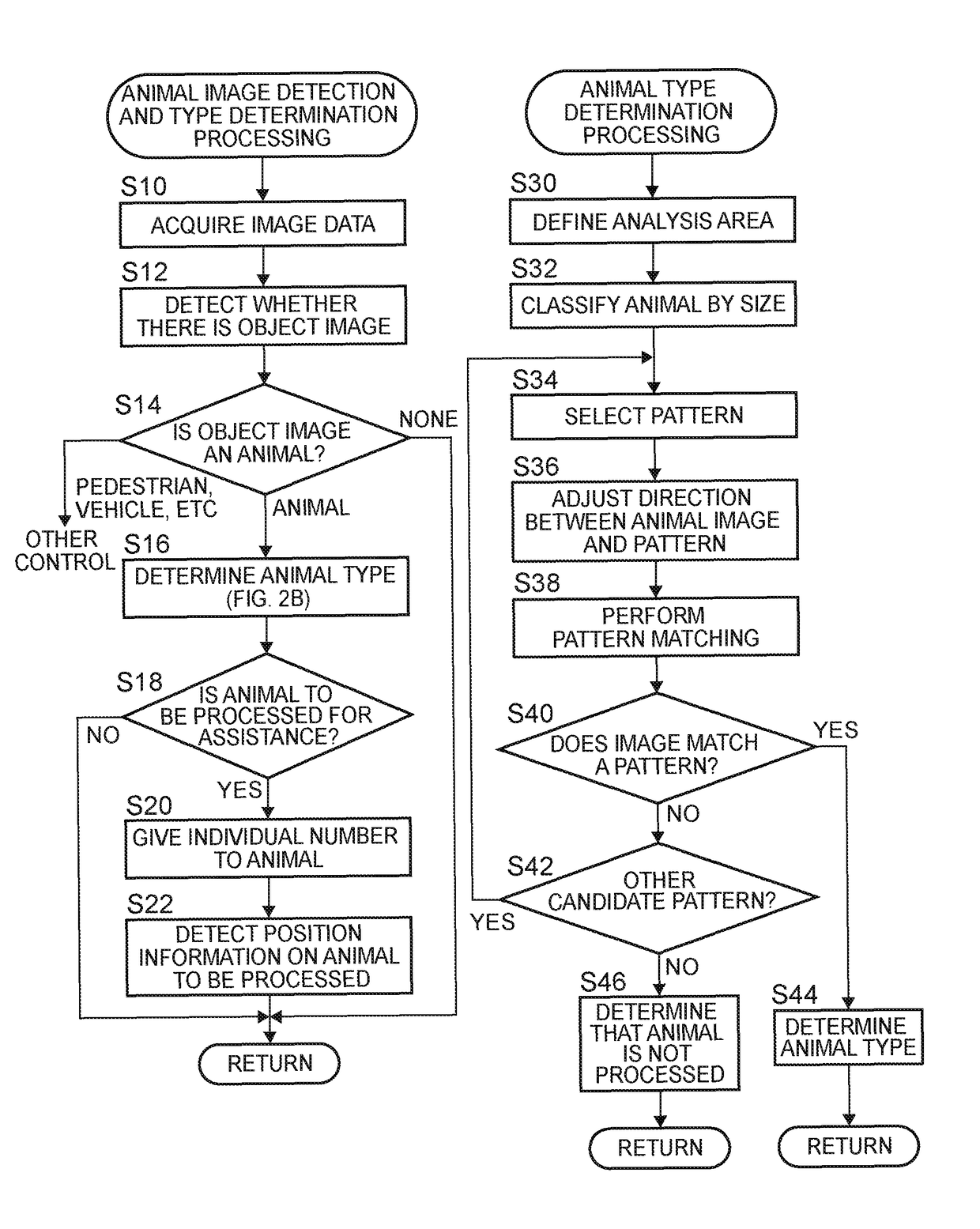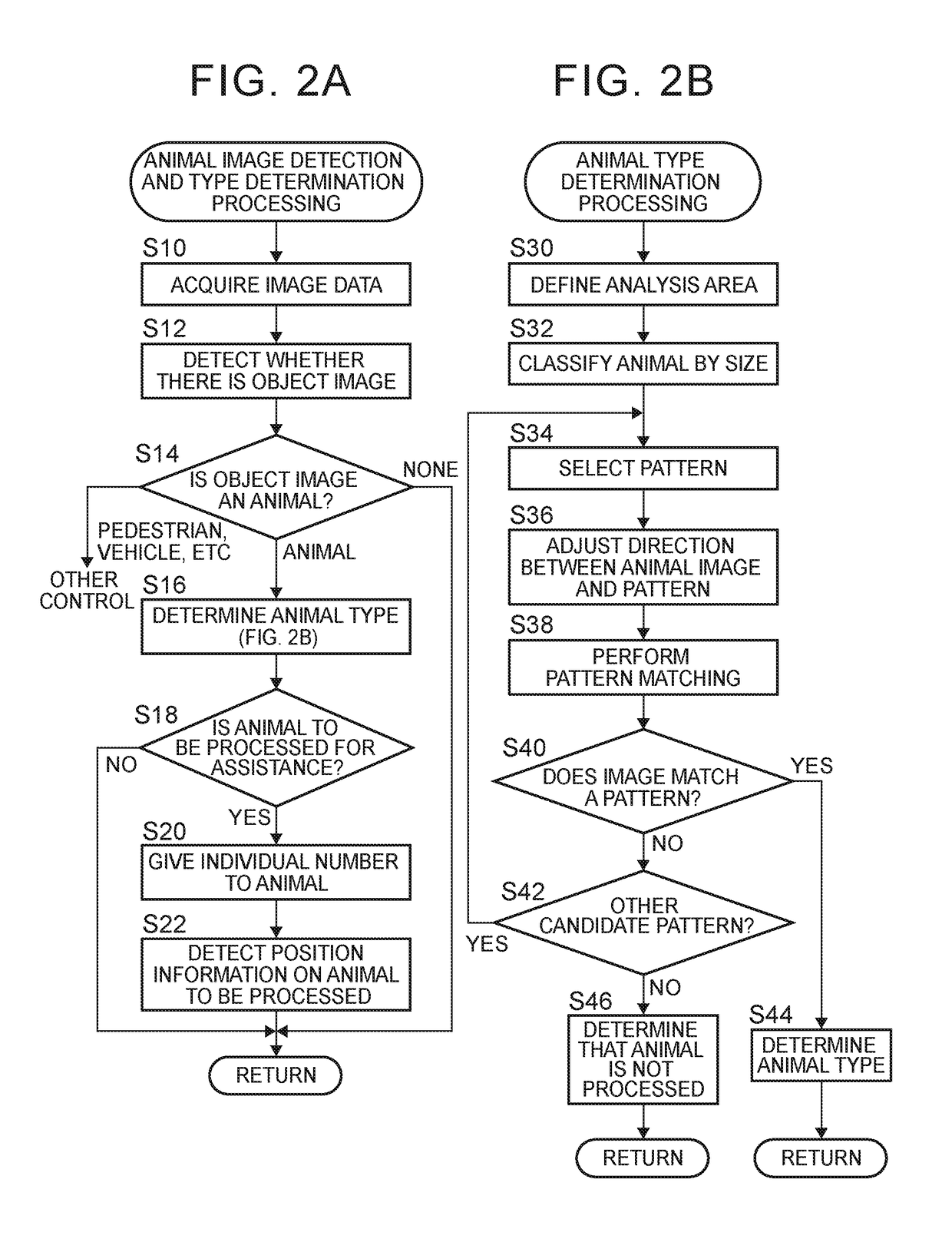Collision avoidance assistance device for a vehicle
a technology of collision avoidance and assistance device, which is applied in the direction of pedestrian/occupant safety arrangement, scene recognition, instruments, etc., can solve the problems of increasing calculation load and processing time, difficult to accurately determine the possibility of collision between the vehicle and the animal, and difficulty in generating a warning. , to achieve the effect of reducing discomfort and strangeness in the surroundings
- Summary
- Abstract
- Description
- Claims
- Application Information
AI Technical Summary
Benefits of technology
Problems solved by technology
Method used
Image
Examples
Embodiment Construction
[0080]Exemplary embodiments are described in detail below with reference to the attached drawings. In the figures, the same reference numeral indicates the same component.
[0081]According to one aspect of an exemplary embodiment, a collision avoidance assistance device may be mounted on a vehicle 10, such as a standard automobile, as schematically shown in FIG. 1A. In a normal mode, a driving system device 28 that generates driving / braking force at the wheels (only a part of the driving system device 28 is shown), a braking system device 40 that generates braking force at the wheels, and a steering system device 30 are mounted on the vehicle 10 that has left and right front wheels 12FL and 12FR and left and right rear wheels 12RL and 12RR. The braking system device 40 operates as follows. At a normal time, the brake pressure in the wheel cylinders 42i (i=FL, FR, RL, RR; this notation will be used in the description below) installed on the wheels, that is, braking force at the wheels,...
PUM
 Login to View More
Login to View More Abstract
Description
Claims
Application Information
 Login to View More
Login to View More - R&D
- Intellectual Property
- Life Sciences
- Materials
- Tech Scout
- Unparalleled Data Quality
- Higher Quality Content
- 60% Fewer Hallucinations
Browse by: Latest US Patents, China's latest patents, Technical Efficacy Thesaurus, Application Domain, Technology Topic, Popular Technical Reports.
© 2025 PatSnap. All rights reserved.Legal|Privacy policy|Modern Slavery Act Transparency Statement|Sitemap|About US| Contact US: help@patsnap.com



